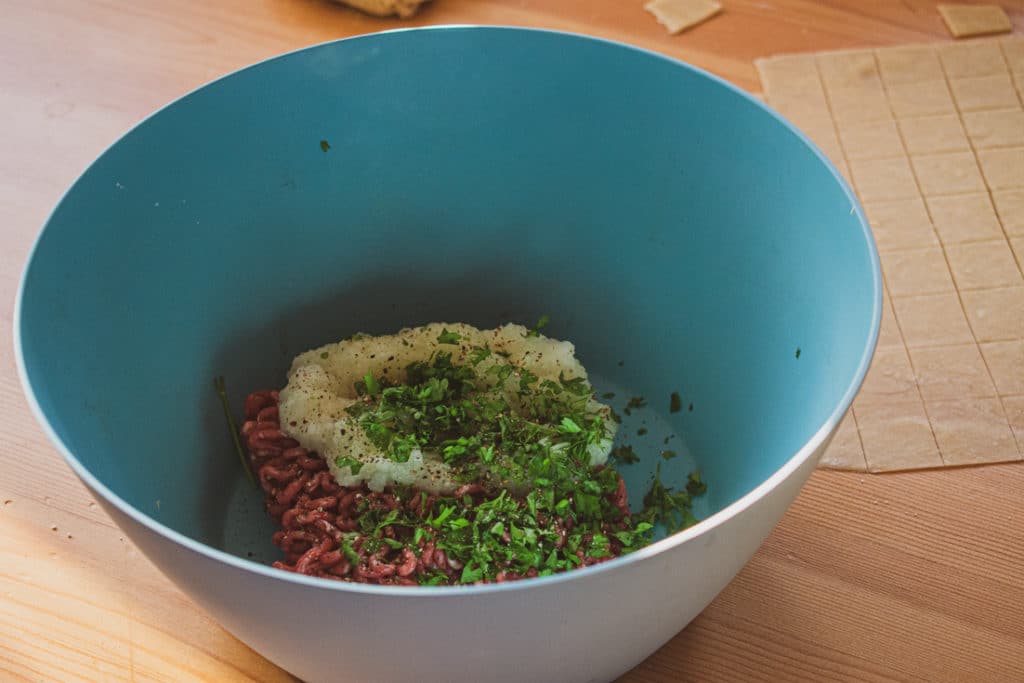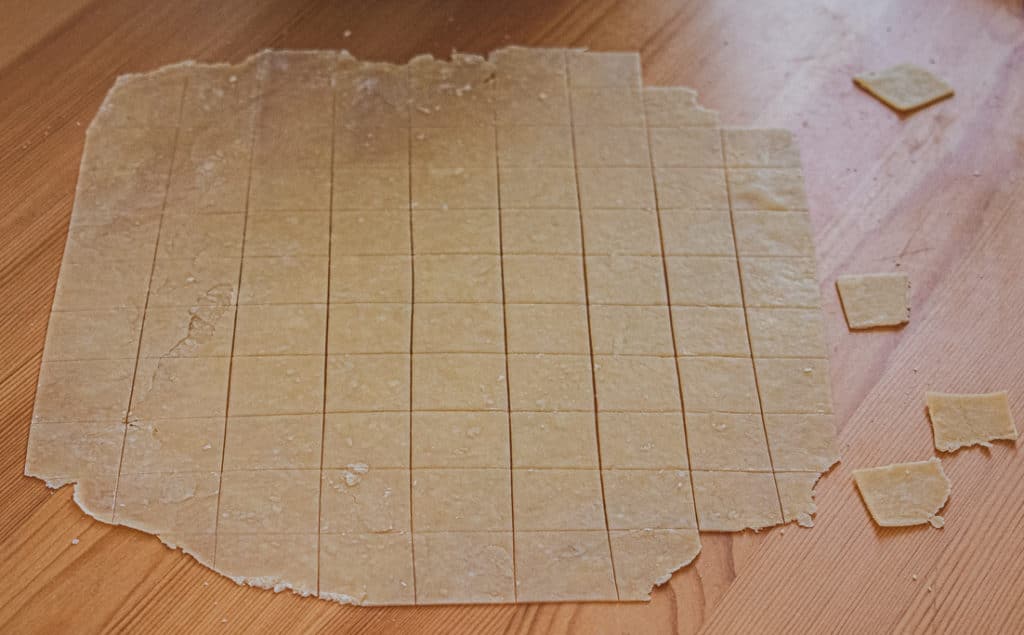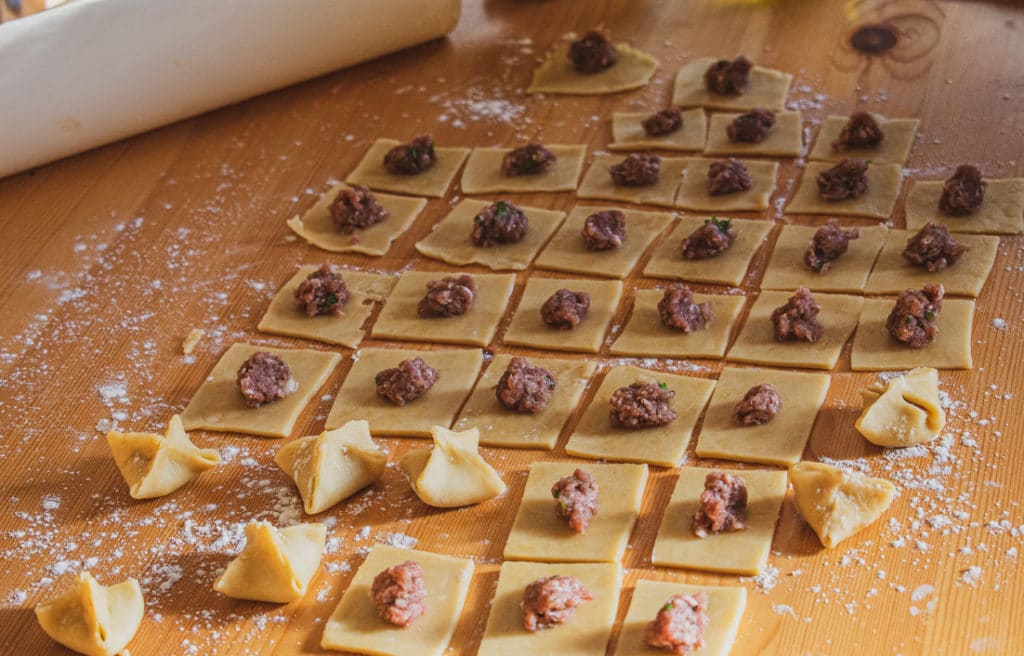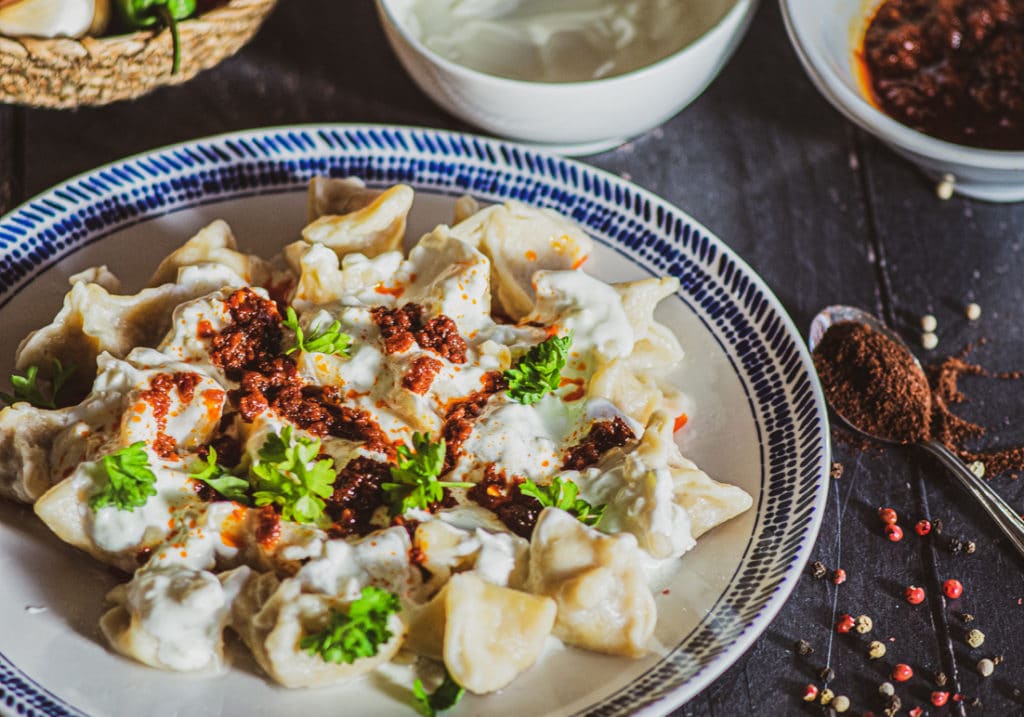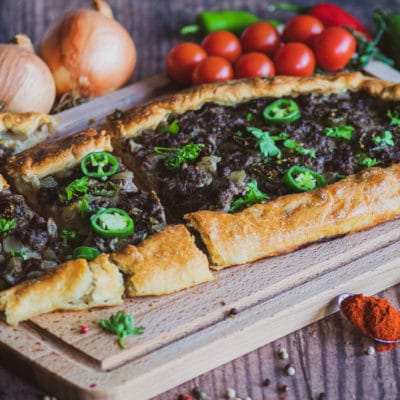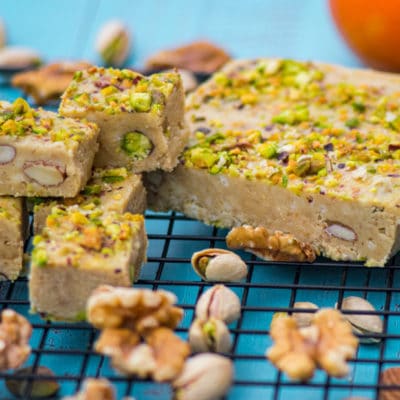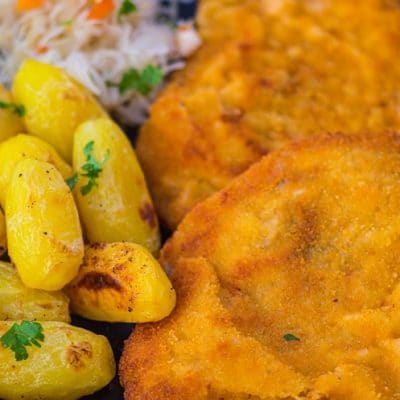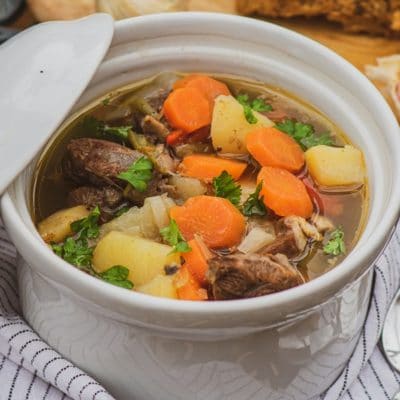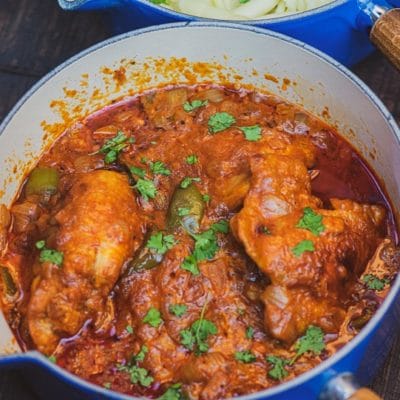Ingredients
-
Dough
-
500 g Plain Flour
-
2 pcs Egg
-
1 teaspoon Salt
-
400 ml Water
-
100 ml Olive oil
-
Stuffing
-
250 g minced beef
-
1 pcs onion grated
-
few stems fresh parsley chopped
-
1 teaspoon Salt
-
a pinch Black pepper
-
Yoghurt Sauce
-
500 ml yogurt
-
4 pcs garlic cloves finely chopped
-
Red Sauce
-
3 tablespoons pepper paste
-
25 g Butter
-
1 teaspoon sumac ground
-
1 teaspoon chilli peppers flakes
Directions
Manti is a traditional and widespread boiled dumpling dish in Turkish cuisine. Traditionally it is served with a yoghurt sauce and red pepper or tomato sauce.
Similar dishes exist in other Asian and European countries. In Afghanistan, it is called mantu, while in Armenia and Georgia it is known as khinkali. This dish is also very well known in East Asia. A similar dish can be found in China, known as jiaozi. There is also another dish called mantou, but it refers to another dish.
In Mongolia it is buuzas, in Tibet it is momo and in Japan gyoza. While in Korea it even has a very similar name – Mandu.
Variations of manti exist in Europe as well. In Ukraine, it is Varenyky and in Poland Pierogi. A very similar dish is Italian tortellini and ravioli. In Bosnia and Herzegovina, it is called klepe.
Manti Origin
Although there are no reliable historical records, it is considered manti originated in Mongolia during the 13th or 14th century. The first record of it, called mantu, is mentioned in the manuscript Yinshan Zhengyao from China. It was written by a certain doctor, Hu Szu-Hui, who served in the court of the Chinese Emperor during the Yuan Dynasty. The Yuan Dynasty is the other name for the Mongol rulers of China.
Along with the Mongol conquests and through Silk Road, manti extended to the west as far as the Ottoman Empire and Europe. Even today in Turkey, it is sometimes called the Tatar boregi, because Tatar is one of the names for the Mongols.
The first manti record in Turkey dates from the 15th century a cookbook written by Muhammed bin Mahmud Shirvani. Apart from manti, in the Ottoman Empire, there was a much more famous and very similar dish called ‘tutmaç’. ‘Tutmaç’ had no meat filling and was cooked in yoghurt-based soup.
Unlike similar dishes in other countries, in Turkey, manti should be made as small as possible. There is a tradition that, before the wedding, the mother of the groom comes to her daughter-in-law’s house. The bride is preparing manti for her, and the smaller it is the better. According to one tradition, one bride served 40 in just one spoon.
This manti recipe was given to me by a friend from Ankara. She has been preparing it this way for years, and I hope this one will be as good as hers.
Steps
|
1
Done
|
Put flour, water, egg and salt in a bowl to make a dough, then knead. Add olive oil and knead for a few minutes until you get nice elastic mass. Be sure to put enough olive oil so you can easily shape the dumplings later. Cover the dough with a cloth and leave to rest. |
|
2
Done
|
|
|
3
Done
|
Divide the dough into two or three pieces so that it is easier to roll out. Roll out the dough to a thickness of 1-2 mm. Cut the dough into squares of approx. 4 cm. In my experience, this is a size that can be easily shaped. You can make them bigger or smaller. In fact, manti should be as small as possible. |
|
4
Done
|
|
|
5
Done
|
In a pot, bring water to boil. Place the manti in water, add salt, and cook for 10-12 minutes, until the dumplings float to the surface. |
|
6
Done
|
Once done, remove them and set aside to cool. |
|
7
Done
|
Prepare a white sauce by adding finely chopped garlic to the yoghurt. |
|
8
Done
|
Now prepare the red sauce. In a frying pan, heat butter and add the pepper paste. You can also use tomato paste instead of pepper paste, but I prefer pepper paste. Add sumac, finely chopped mint and optionally chilli flakes. |
|
9
Done
|



